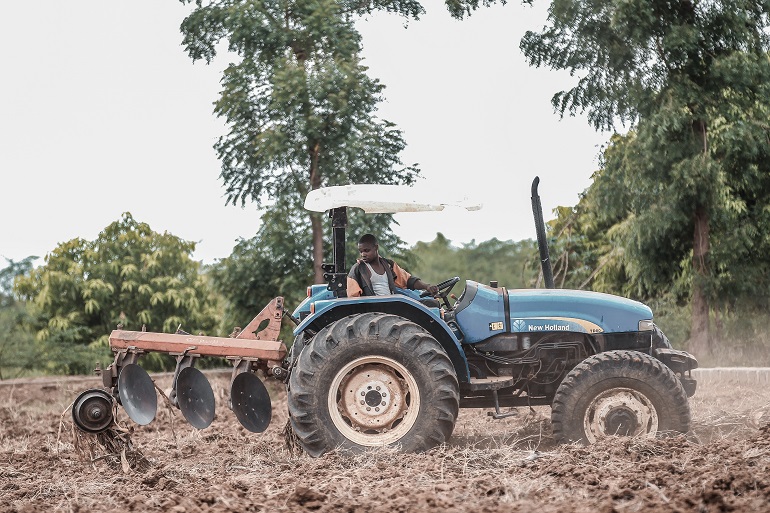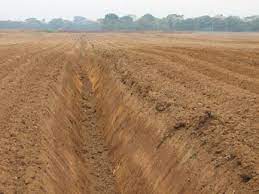Soil Requirements and Land Preparation for Pineapple

This post is also available in:
This post is also available in:
![]() Español (Spanish)
Español (Spanish) ![]() Français (French)
Français (French) ![]() Deutsch (German)
Deutsch (German) ![]() हिन्दी (Hindi)
हिन्दी (Hindi) ![]() العربية (Arabic)
العربية (Arabic) ![]() Türkçe (Turkish)
Türkçe (Turkish) ![]() 简体中文 (Chinese (Simplified))
简体中文 (Chinese (Simplified)) ![]() Português (Portuguese (Brazil))
Português (Portuguese (Brazil))
Soil preparation is critical to ensuring proper root growth, particularly in the deeper soil layers. To permit plant root growth, the soil must be friable to a depth of at least 2 feet and have a pH between 5.5 and 6.5 (1). The soil’s pH is the most significant factor for pineapple farmers to consider. The availability of nutrients like zinc, copper, iron, and manganese can be affected if pH values are higher than optimum, while phosphorus availability is affected when pH values are low. Even though some authors indicate that pineapple is a plant that thrives in acidic soils (ideal pH 4.5-5.6), there are instances when calcium and magnesium levels in the soil are deficient. In such cases, it is crucial to apply lime to fix the pH to the most desirable level (2,3). It is crucial to use calcium carbonate or another commercially available agricultural lime to achieve the necessary pH level (4). In contrast, alkaline soils must be treated with sulfur and receive continual applications of organic fertilizers to achieve the required pH level. The following are the most commercially available limes:
- Calcium hydroxide Ca(OH)2, Dolomite lime (MgCO3·CaCO3)
- Calcium carbonate (CaC03)
On a field or land, vegetation must be cleared, and the plant residues must be appropriately managed. Burning them should be the last option. It is also possible to cultivate the soil in areas that have been farmed in the past and do not include any vegetation. In places where pineapples were once grown, all crop residues need to be removed, preferably by mixing them into the soil. This helps to improve the soil’s physical and biological properties. On commercial farms, plants are sprayed with the needed herbicide, cut into tiny pieces, and then plowed into the soil for more efficient clearing; if herbicides are not used, plants are manually chopped-uprooted. Overall, allowing plant debris to degrade before planting is essential. This may encourage faster pineapple growth after planting because the plant residues will decompose and add more organic matter and nutrients needed. In addition, adding animal manure, if available, is recommended, as it increases both micro and macronutrients in the soil (5).
It is recommended that land should be plowed thoroughly and harrowed twice or three times to create a fine tilth; the soil structure should be adjusted, and weeds controlled. Plowing is done to a depth of 60 to 75 cm (23.6-30 inches) on commercial farms. The duration between plowing and harrowing must be sufficient for effective weed control.

Drainage system
Furthermore, pineapple is particularly sensitive to soil saturation, which impacts its development and productivity. As a result, drainage canals are vital in areas with heavy precipitation or poor drainage. Proper drainage and aeration are essential because they promote root growth and lower the danger of plant loss from Phytophthora fungal diseases. The water table should be 80-90 cm (31.5-35.4 inches) below the soil’s surface. Below is an example of a drainage system.
References
- United States Department of Agriculture. (2018). Pineapple cultivation guide. http://www.micronesialandgrant.org/wp-content/uploads/2018/03/COMFSM-Pineapple-Cultivation-Guide-Verma-2018-Updated-03022018.pdf
- Queensland Government Department of Agriculture and Fisheries (2013). https://www.business.qld.gov.au/industries
- Souza L. F. & reinhardt D. H. (2007). Pineapples. Https://www.alice.cnptia.embrapa.br/handle/doc/654337
- Andersson A., & K. O. Nilsson. (1974). Influence of Lime and Soil pH on Cd Availability to Plants. Ambio, 3(5), 198–200. http://www.jstor.org/stable/4312080
- Duane P. B., Kenneth G. R. & Dale O. E. (2002). Pineapple production in Hawaii. https://www.ctahr.hawaii.edu/oc/freepubs/pdf/f_n-7.pdf
Pineapple History, Uses and Nutritional Value
Pineapples Plant Information and Environmental Requirements
Soil Requirements and Land Preparation for Pineapple
Planting of Pineapple – Pineapple Plant Density
Pineapple Water Needs and Irrigation Systems
Pineapple Fertilization Requirements









































































